A shaded, tree-lined lane is such a handsome thing. I like to linger and dream and poke around, especially in these older Omaha neighborhoods, designed to be strolled. I realize, as do you, that every home has a history and delicious secrets hidden behind those clinker bricks. Our years of snooping together have taught us that, at the very least. We like our mansions lording from the far side of tall wrought iron gates. We adore rippled, well-trodden brickwork paths. We prefer a weathered Shingle Style enclosed in a snowy wood. And who doesn’t sigh for a smart, stone Rambler? All of that beauty is well and good but it is rather lopsided, in my estimation, without a smidge of strangeness. I live for the unaccountably odd but few neighborhood mysteries are more deliberately enigmatic than the little houses right down the lane. Purposely Incognito, they have been working for decades to be ignored.
These tiny homes are not really houses at all. Like a movie set or a Western Town False Front, these structures quite literally are a disguise, planted within our neighborhoods, doing their quiet work. And sometimes not so quiet work. The neighbors seem to accept or disregard these structures as they would any eccentric of the block. Her mortgage and utilities were paid in full long ago and yet there is no one home.
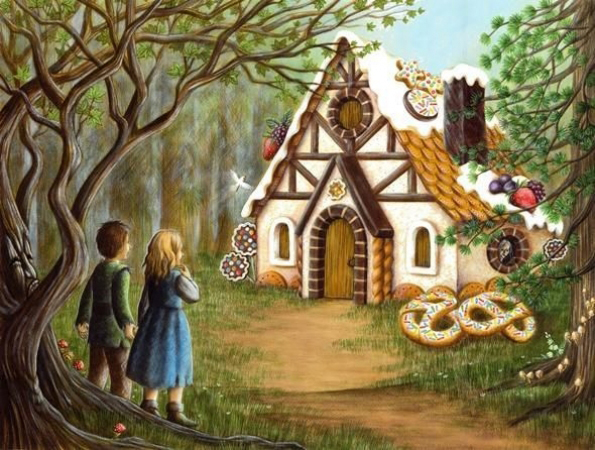
I learned of these city-engineered, faux homes growing up in Benson, where there were three discreetly tucked-in-plain-view of nearby friends’ houses. Their very existence seemed puckish, like an elaborate trick the city was playing. Why would they go to all that trouble? They seduced me with their sloping Hansel and Gretel Cottage allure. I suppose they still do. I longed to go inside, however there was no staircase, chandelier or fireplace to be spied from the tiny windows. Somehow it seemed possessing that the very homes built to conform, were just tiny and hypnotic enough to make children curious. I am positive I am not the only 70’s child who thought so. Strangely there may be a deeper association to the Hansel and Gretel tale than any of us suspected.
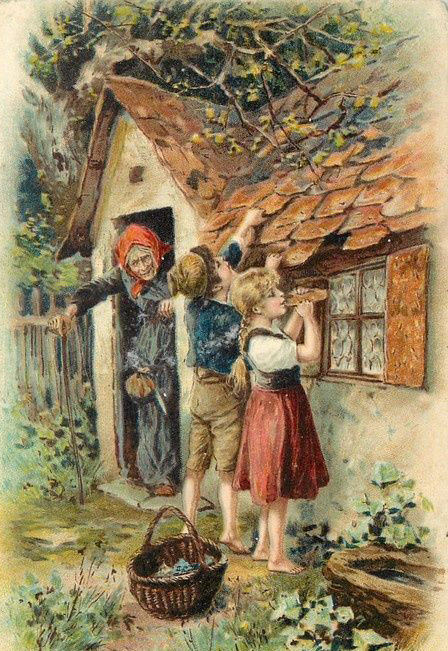
Enshrouded under such a well-conceived plan, it was hard to find many public records. The addresses were often wrong. The owners didn’t seem to want to discuss the matter and regular folks hadn’t given the structures much thought of late. It was more than a tight-lipped secret; the little homes had pulled off the ultimate Forgotten Hold and Corner. Aside from the tiny houses, I would stumble across cleverly faked assembly halls, apartment buildings, warehouses, monuments and one cavernous structure hidden under a golf course. It was all so captivating as I’ve always loved a good impostor. I decided to trail a few of these ever so appealing false appearances last summer.
The Purpose
From what I could find, local municipal utilities companies first brought the little houses or substations to Omaha neighborhoods from the 1910s to the 1930s, in pursuit of delivering proximate gas, water and electric service from the larger city mains. A search of national newspapers revealed this practice began in the States in the late 1800s. The reservoirs, the pumps, the transformers, the filters, the generators of the infrastructure all needed surreptitious cover to fit within city limits because, as I see it, we were still invested in designing attractive cities. Omaha and the utilities companies would obtain land parcels dotted throughout dense residential districts, often using eminent domain. These little working station houses would serve any number of functions such as to reduce gas pressure from the city lines or as a distribution transformer for electricity. Once sheltered within the transformer house or substation, the utility could be distributed at an even, safe, stepped-down (lower voltage) rate to customers’ homes within that service district.
Common structures in plain view have long disguised military and government installations. Even the natural environment has been used as camouflage. I have not made a larger study of this international operation, although I was privy to a building in town the FBI inconspicuously rented a floor in. They have since moved on without a trace…But for our squeaky clean investigation today, American disguised buildings largely conceal ventilation stacks and electrical substations because the general public judges them as Ugly. In turn these innocuous shell structures are often ignored while shrouding the heavy lifting machinery that makes our very community run.
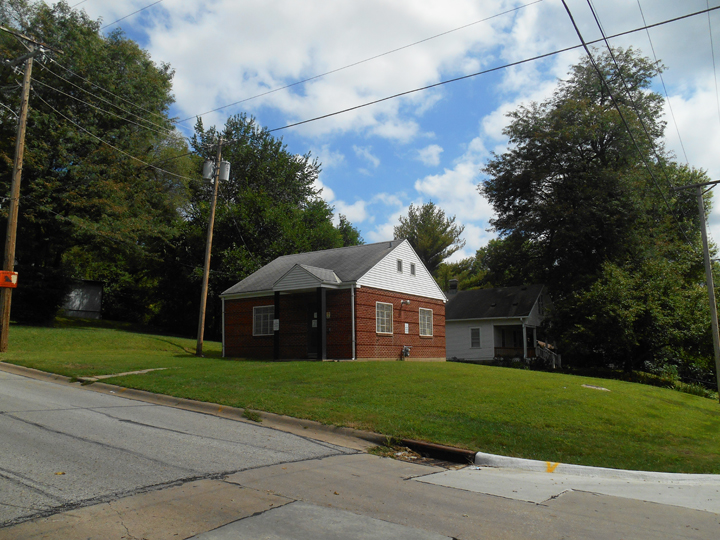
Under Cover Houses
I found the little buildings went by a number of names, which did complicate sleuthing matters. But we love complication, don’t we? The Unnoticeables were called Booster Stations, Substations, Governor Stations, Auxiliary Buildings, Valve House, Electricity House, Pumping Stations, Transformer Houses, Energy Houses, Utilities Buildings, and Regulator Stations.
It was 1914 that I first discovered the Metropolitan Utilities District describing their “governor stations” nestled into neighborhoods. Early buildings were at 22nd and Manderson; 20th and Charles; 30th and Burt; 46th and Harney; 52nd and Military Avenue. MUD General Manager Leisen further explained in August of 1928 the necessity of governor station installation so that natural gas could be delivered from several central points into residential streets.

The majority of extant Cryptic Cuties seemed to spring up after World War II in 1940s, 50s and 60s. Did the Omaha utilities companies work with local architects to create these attractively vague exteriors? I needed to know. By design, they suggested historical building styles, focused on being as unobtrusive as possible, adept at mimicking its nearby cohorts. Their disguises would also offer security benefits even though they are often embellished in dramatic warning signs.
Painted windows or no windows, you say? Like any new kid on the block, blending in with the locals was a position hard earned. In Omaha the Tudor, the Bungalow and 1940s Minimal Traditional Style seemed to have won favor, at least in the boardrooms of the utilities companies. The early landscaping and simple gardens attempted to further screen the utilities houses from the neighboring residences. Keeping up these appearances was essential, as it was the little booster stations’ interior activity that truly needed concealing. The stranger next-door was going to hum, whirr, rumble, clunk and send out rhythmic gusts of heat. Men in strange suits would be her only visitors, coming and going at all hours, with the exception of her personal lawn mowing crew, in an age before high-end lawn and landscaping maintenance. Oh yes, and we kiddies, who couldn’t help but steal a peek through her magnetic windows and play house on her porch. Her elaborate exterior shielded an almost barren room, similar to a garage but often with crisp white walls. Therein reclined The True Stranger– a large, heavy, industrial-grey or black pieces of machinery, the likes of which I’d only observed in the grade school boiler room. Other wrapped homes concealed switches, mystery electrical panels, cables, connections, and a hideous tangle of wires. Those initiated to its secrets might tell us more.

I am not sure how many of these masked buildings are on the residential streets in Omaha. I, personally, counted 58 addresses but I am positive there are more.
The Metropolitan Utilities District Visit
Back in the good old days, one might have assumed the work of the Metropolitan Utilities District was completed in an office like this or at some large plant.
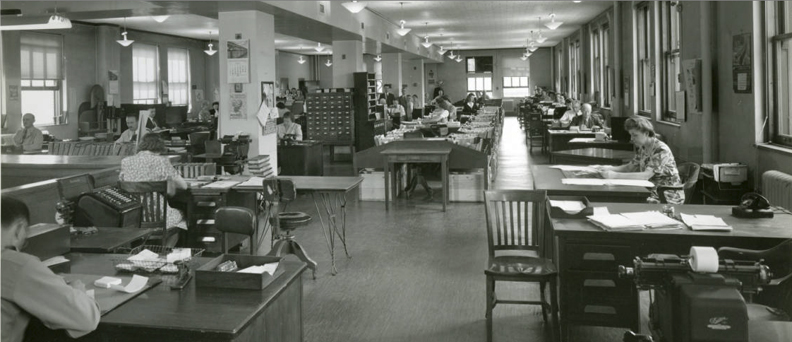
Just look at that great 1940s office décor. My favorite. Metropolitan Utilities District office. Creator: Bostwick, Louis (1868-1943) and Frohardt, Homer (1885-1972). Publisher: The Durham Museum. Date: 1944.
But some of the hardest workers were the little neighborhood houses, pumping and humming away. My investigation would take me directly to the Metropolitan Utilities District downtown office to see if anyone there knew anything about the cloak and dagger neighborhood houses. I guess I went in Dreaming Big, in hopes there was a staff archivist with photos, original blue prints, architects’ names and a whole obsessive file on the elusive houses. It seems silly now. In reality reception called down an MUD representative who was so friendly and open to my inquiry. She was going to email me some information, but oddly I never heard from her again. Was my latest wig and costume off-putting? Madame MUD appeared interested in what I had dug up but hadn’t heard of the curiously named “Governor Stations” and “Auxiliary Buildings,” even though she certainly was acquainted with the little houses. I shared my clue that all of the hush-hush buildings were held in R. Chantry’s name, of the MUD Accounting Department. She did inform that MUD’s Walnut Hill Reservoir is now only a pumping station and thought I might enjoy the newly renovated Florence Pumping Station Building. She did suggest a book David Barber had written called Trial and Triumph.
But no cobwebbed files of savory clues were wheeled out for Miss Cassette. I had hit these brick walls previously when hunting for Woodmen of the World and Mutual of Omaha hints. Either these large corporations are not obsessive enough for our tastes or I am a Big Pest. (You can decide quietly amongst yourselves.) I would not be deterred.

The Obvious Beauties
The Walnut Hill Reservoir and Florence Pumping Station were impressive designs to draw in the public, offering beauty and a chance to regale in the successes of the Metropolitan Utilities District. These were exalting man made endeavors as if to say, “Look how far our city has come.” The structures were monumental in scale and finer in detail than most buildings one will find in Omaha. The landscaping and gardens were serene and meant to be taken in. But these environments and structures were not businesses, offices, or the fantastic edifices of once great men. These complex buildings were also fakes. Great fakes that hid a larger function–the cleaning and production of the city’s water. People were encouraged to come and see the breathtaking marvel of the utilities delivery system. It is hard to fathom, but in light of the recent discovery that Omahans once found folly in touring the slaughterhouses of South Omaha, I chalked it up to simpler times. It is important to pause and consider the early citizens’ healthy respect and true interest in the function of their city.
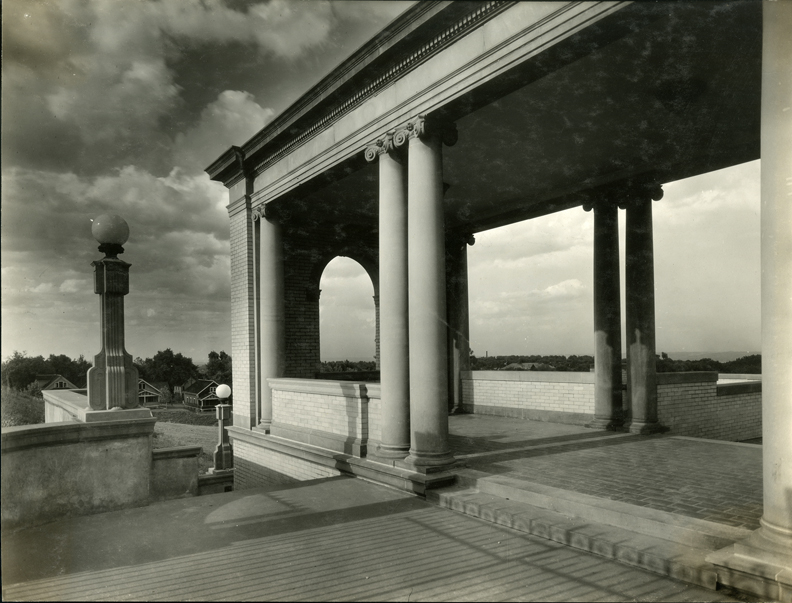
The Walnut Hill Reservoir and Pumping Station began operations in 1881 (some reports say 1882) from the Walnut Hill neighborhood, between 38th and 40th Streets, from Hamilton to Nicholas Streets. “Three large reservoirs are filled daily by the Florence Water Works and distributed to the central part of the city by gravity. Three boosters pump the water to higher parts of the district, to include Dundee. Homer Virgil Knouse designed it. Creator: Bostwick, Louis (1868-1943) and Frohardt, Homer (1885-1972). Publisher: The Durham Museum. Date: 1921. Airy and Haunting. This may or may not be the site of an M. C. Escher print.

This large, park like setting was a great teen hangout and marvel in my high school years. What did it all mean? An aerial view from the east of the Walnut Hill Pumping Station and reservoirs at 40th and Hamilton Streets in Omaha. Creator: Savage, John (1903-1989). Publisher: The Durham Museum. Date: 1947.
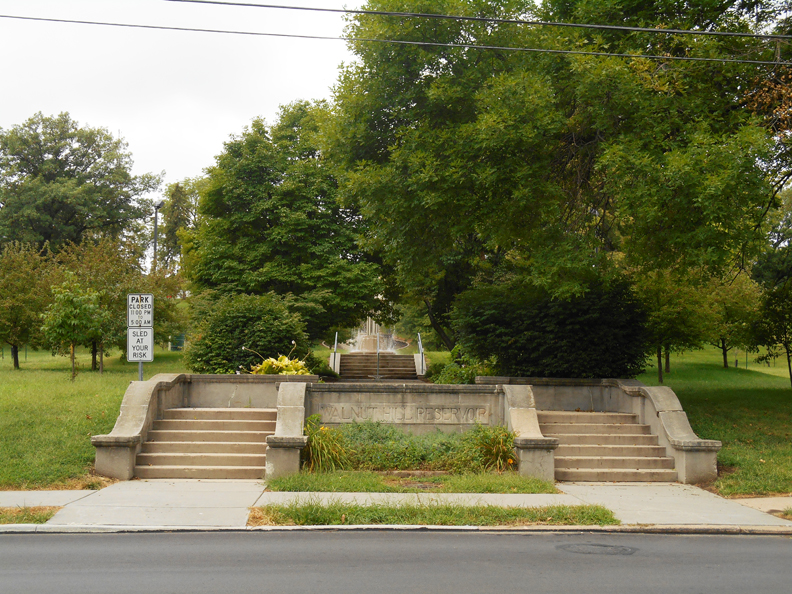
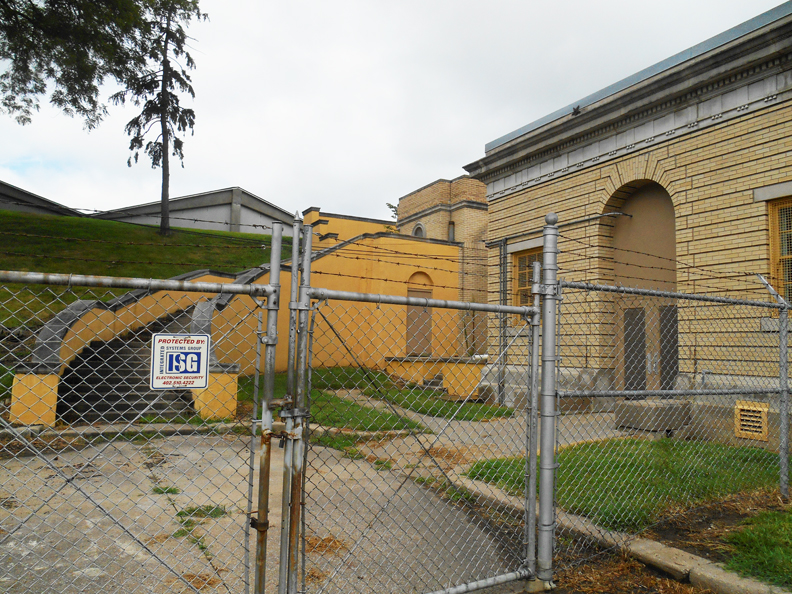
The Walnut Hill Pumping Station sans reservoir, as it appeared last summer. Still a busy place for kids, joggers and folks with dogs but no longer as inviting as it must have once been.
The Florence Water Works was a privately owned water company built in 1879. The American Water Works Company out of Chicago would later operate the plant; this company also is responsible for erecting the Minne Lusa Pumping Station on site, completed in 1889. This company later still became the Omaha Waterworks. (Why, oh, why can’t Omaha have such a fetching utilities name now?) Metropolitan Utilities District did not enter the picture as a city utility company until the teens.
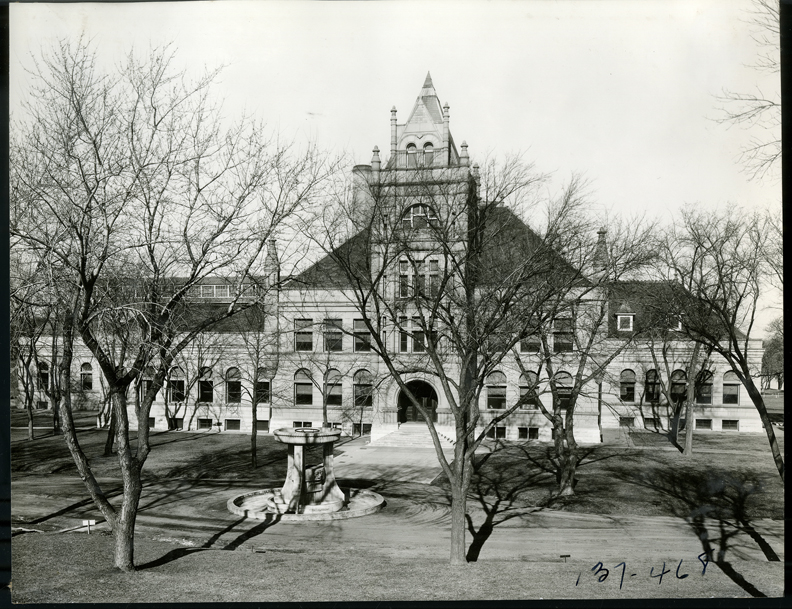
The Minne Lusa Pumping Station was a large stone building with a tower-like front and two wings. Creator: Bostwick, Louis (1868-1943) and Frohardt, Homer (1885-1972). Publisher: The Durham Museum. Date: 1922.
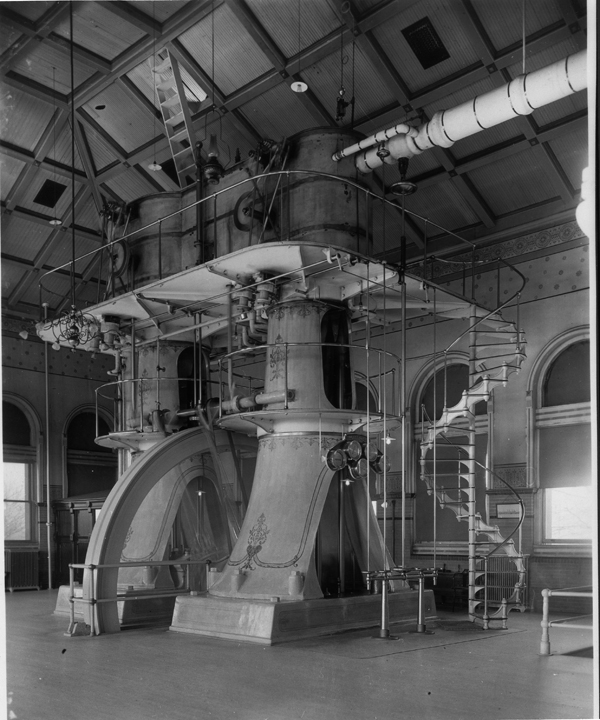
What’s behind the mask? Minne Lusa interior water pumps. Like a scene from Metropolis or the guts of fantastic ship. Creator: Bostwick, Louis (1868-1943) and Frohardt, Homer (1885-1972). Publisher: The Durham Museum. Date: 1910.

A 1950 MUD “services news pamphlet” borrowed from the W. Dale Clark Library reference desk. I would find this photo of the Florence Pumping Station. At the river’s edge were the intake buildings and beautifully landscaped grounds. “Source of Omaha’s abundant water supply.”

An early postcard indicating Omaha had an even longer history of the tiny, covert buildings than I knew. Called water-settling basins, these would appear as little home-like structures to someone passing on the river. Omaha Waterworks water settling basins. The larger Minne Lusa Station in the background. Creator: Bostwick, Louis (1868-1943) and Frohardt, Homer (1885-1972). Publisher: The Durham Museum. Date: 1898. What a mesmerizing image.
Nothing to See Here, Folks
I love all of the little neighborhood utilities houses but my three favorites are from my childhood in Benson. The Country Club District holds the key to two of the best ones, in my opinion. Each has a rather deliciously complicated story but I will keep it brief.
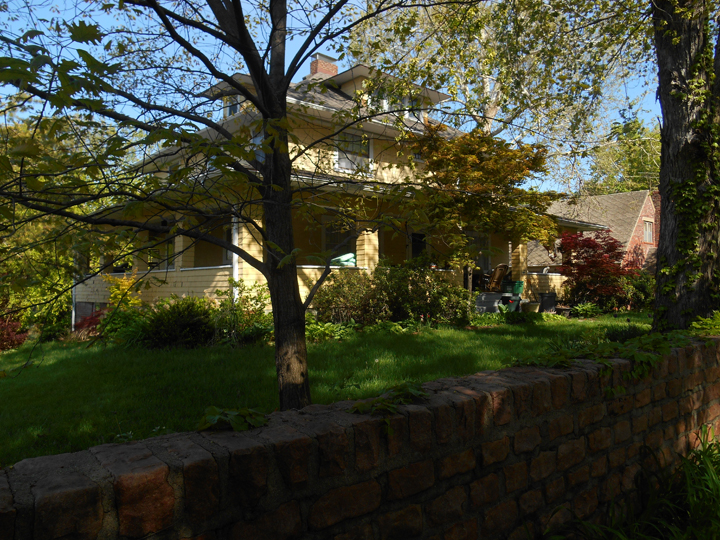
2510 North 56th Street. There is an amazing house situated at 2510 North 56th Street, in the Rose Hill Addition. This gracious home was constructed in 1902 and is known, in part, for the low stone wall surrounding it. Its extension to Lake Street is a curious clue. But the bigger question mark was the little stranger squatting within its perimeter gates.
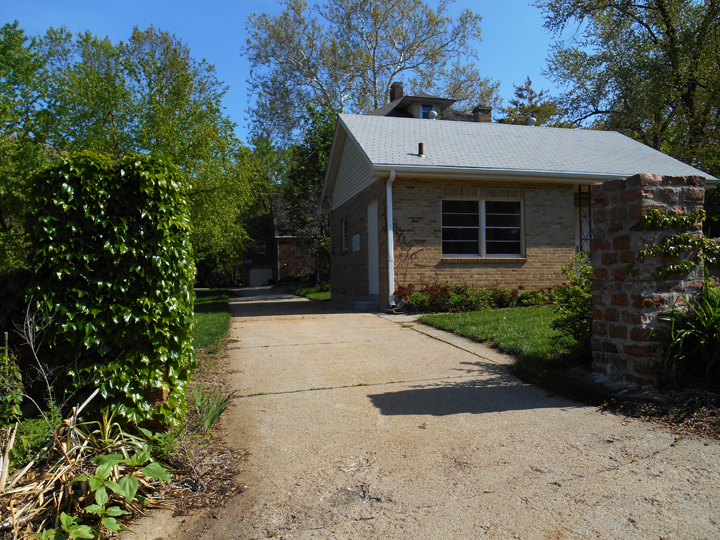
2504 North 56th Street. On first gaze, 2504 North 56th Street gives the impression of a pleasant Mid-Century Modern Mother-In-Law House, built for a family member of the larger 2510. She is within the stone wall perimeter, after all. 2504 oddly faces south on the northwest corner of 56th and Lake. Alas…childhood spying would indicate otherwise.
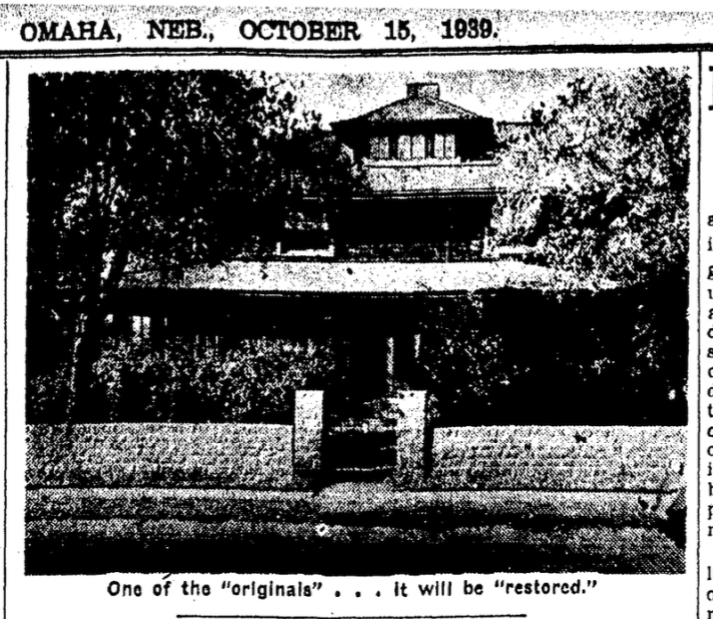
1939 photo of 2510 North 56th from the Omaha World-Herald archives. Omaha attorney, Francis Brogan built 2510 North 56th Street back when the town of Benson was still small and the new Country Club District was even smaller; upon completion in 1902, the Brogan family home was one of only five residences in the exclusive district. The 2510 home was part of a grouping of three lots that accommodated a barn and “cyclone cave.” We have found these caves before in our investigations—an early tornado shelter. Astoundingly the Brogans also owned fifteen lots surrounding 2510. Years later the Brogan home would lodge numerous prominent families, including The Jessie Marion Campbell Studio of Design and Decoration in the 1940s. Back when female interior designers began working out of their own homes, ala my beloved Sister Parish. Several of Brogan’s proud accumulation of parcels were whittled away and sold off over time.
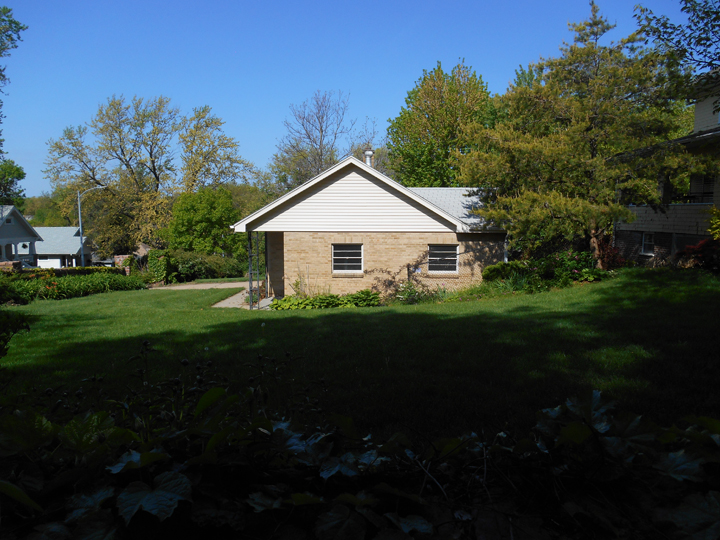
Eastern elevation of 2504 North 56th. In April of 1958 the Metropolitan Utilities District Board authorized purchase of the original Brogan parcel, one lot south of the family home, for 45 hundred dollars. This lot was initially a portion of the Brogans’ gardens—I am assuming this as the stone gate encircles the area. Charles Vrana and Son Construction Company won the bid that summer of 1958. I wondered if it was builder designed? Friends, that is how my little Mid-Century playhouse came to perch within the charming stone wall gates. As you can witness, it is probably better built than most new housing today.
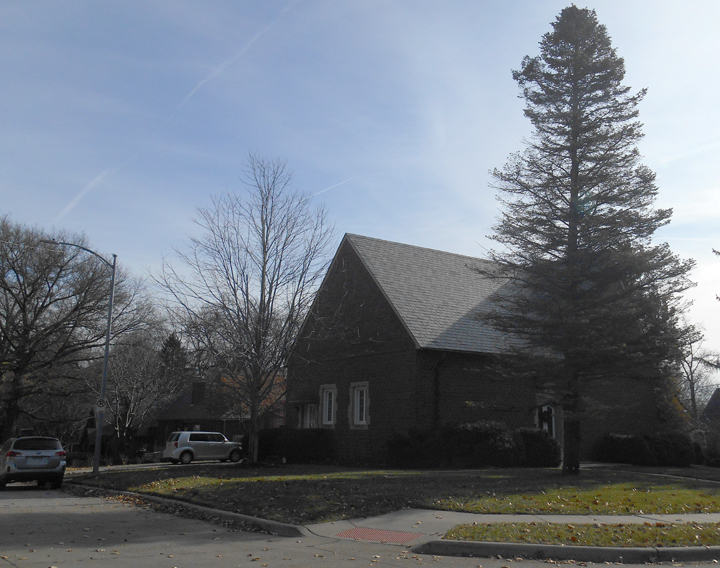
5143 Erskine Street. Another Country Club District Obsession is located at 5143 Erskine and has always been a dark mystery to me. When we were little girls, we were told not to play by this house but we were oh so tempted. Why were there no windows? It seemed like a kind of church, with its austere posturing. Lo and behold it was a fake building, housing transformers and loud humming things that we could never see.
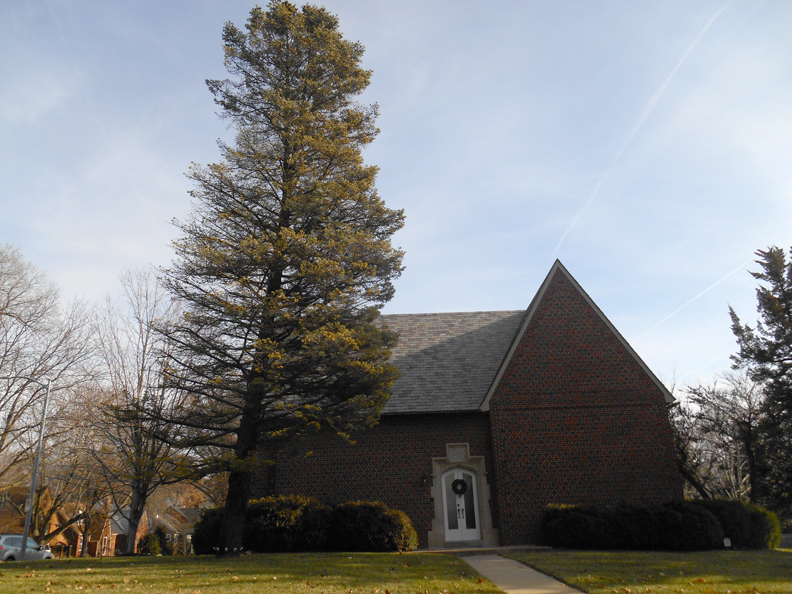
The Assessor site claims it was built in 1930. However I found record of its existence and substation duties dating back to at least 1928 when a “Freakish Wind” blew through Benson, devastating the area and disabled this brick powerhouse. In 1946 5143 Erskine saw its power output doubled to accommodate growth to the Country Club District and surrounding areas.

Northern elevation of 5143 Erskine. Photo from the Douglas County Assessor site.
In 1985 the Omaha Public Power District sold the transformer building to John Ausenhus for $28,000. The Ausenhuses had resided in the area in the 70s and, no doubt, kept their eye on the stunning structure just as we children did. Mr. Ausenhus was in construction and was known within inner circles for having built various secret residential bomb shelters during the Cold War years. Quite elaborate, these hidden underground spaces were told to sleep as many as twelve. There are thought to be many of these elusive shelters around town, however, Ausenhus declined to reveal the owners’ names or addresses when interviewed years later. How very fitting that Mr. Ausenhus would make our list for reconfiguring a Hidden House. Decades later I would have a chance to enter the home and indeed, it did resemble a bomb shelter in a number of ways. Without divulging too much, I will suggest there is a strong energy to the home. This only leads to further questions: Did the Ausenhuses actually live here? Did Mr. Ausenhus use it as a fabrication-work studio? Did he create 5143 as a bomb shelter? The Ausenhuses owned the once OPPD transformer house for thirteen years until selling. It has been a private, nearly window-less residence ever since.
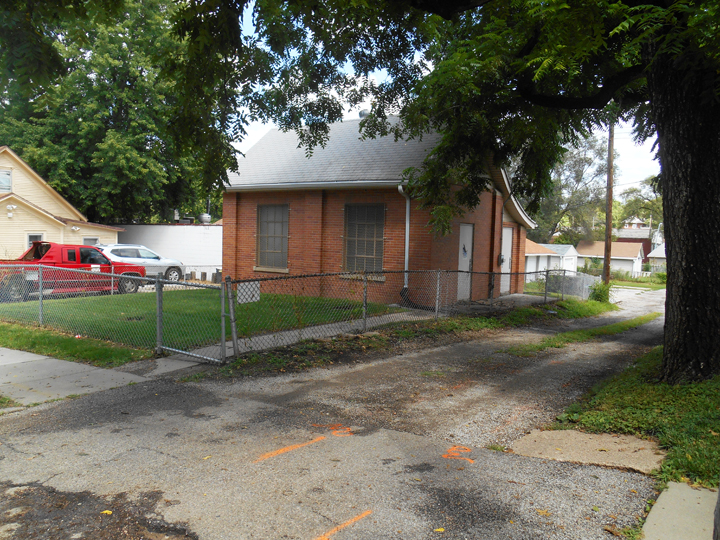
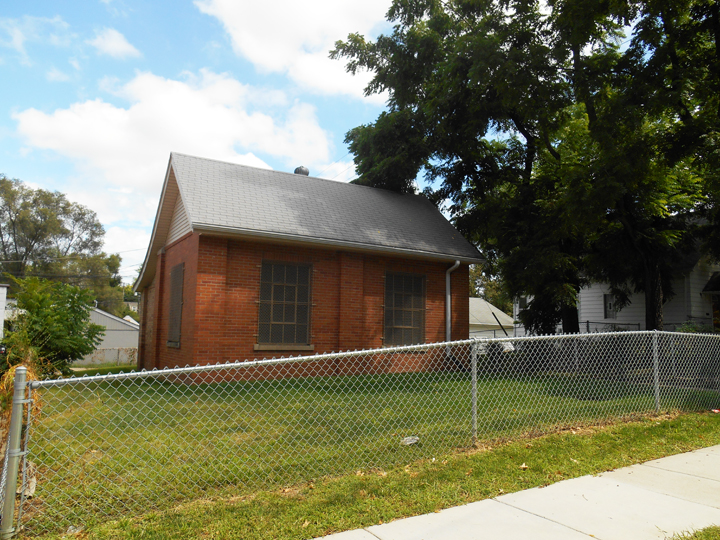
2819 North 66th Street. The third in my Benson delights is located at 2819 North 66th. In elementary school, I was sure this was little play schoolhouse. Its function or seeming lack of function disoriented me. I could think of uses for this candy clubhouse! Just on the outside purlieu of my usual Benson haunt, I only knew its acquaintance due to proximity to my friend’s home. This covert locale was all the more fun because it seemed to own a private alley. All the better to tear around and inspect by bicycle. I can see now it was built in a quaint, modified Tudor style and is ever so cute…still. I was so glad to find her again.
Undisturbed in Plain View
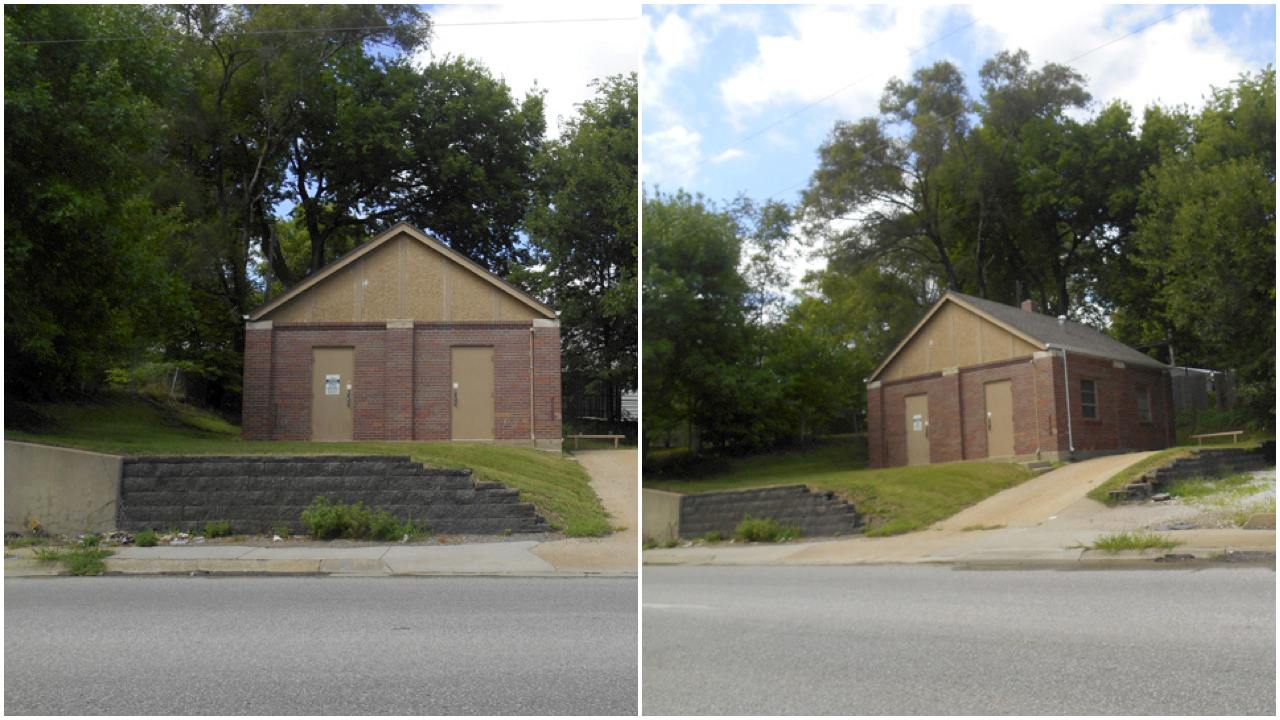
4204 Ames Avenue. Back in 1922 this lot was home to a small service station operated by A. M. Grant. In September of 1950 Metropolitan Utilities District requested permission to construct a booster station at 4202 Ames Avenue. A building permit was presented in March of 1951. The little Unseen House has now been assigned the 4204 Ames designation and works to Bother No One in the vicinity.
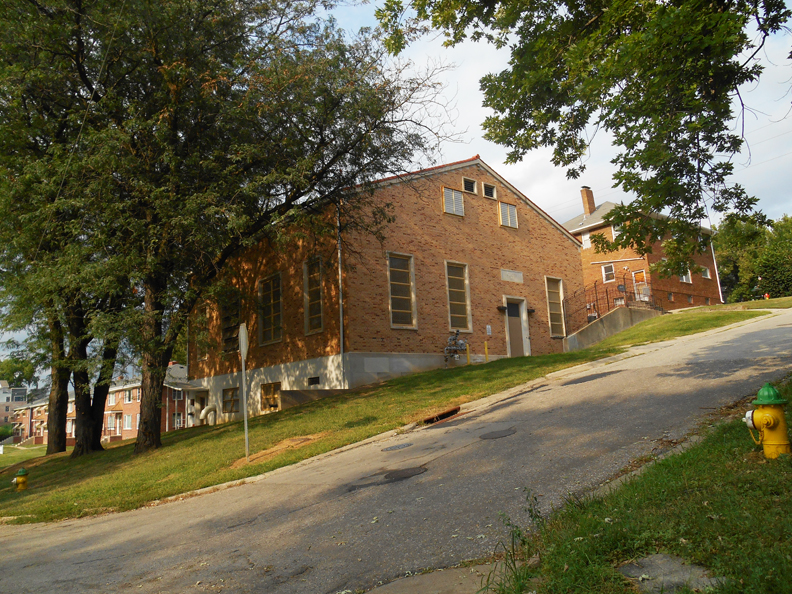
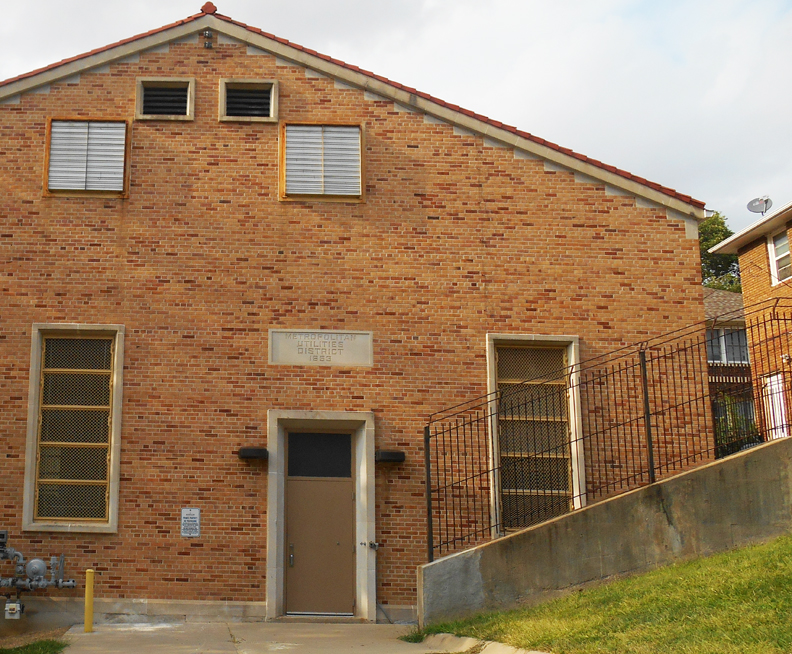
3308 Pacific. According to a 1953 article, this MUD “pump station for the water system” was announced for construction at the northeast corner of Turner Boulevard and Pacific Street. The Foster-Smetana Company won the construction bid. Did they design it? I guess I always assumed this was an assembly hall or a gymnasium out the corner of my eye. Foiled again. Guilty as charged.
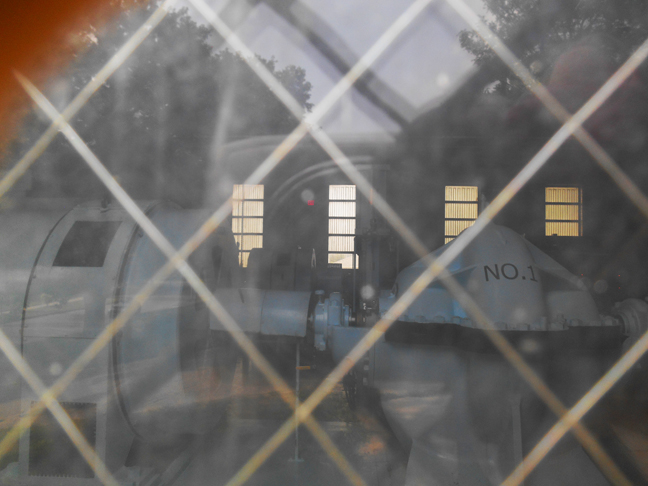
The interior image of 3308 Pacific is ghostly and fascinating. Is this a NASA station in disguise?
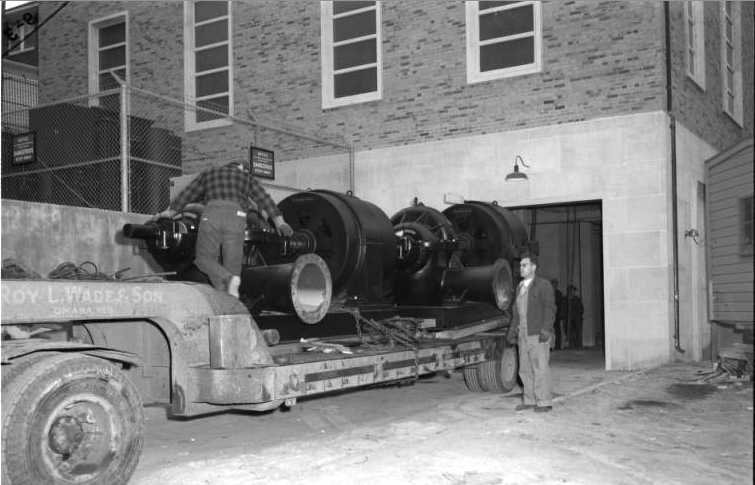
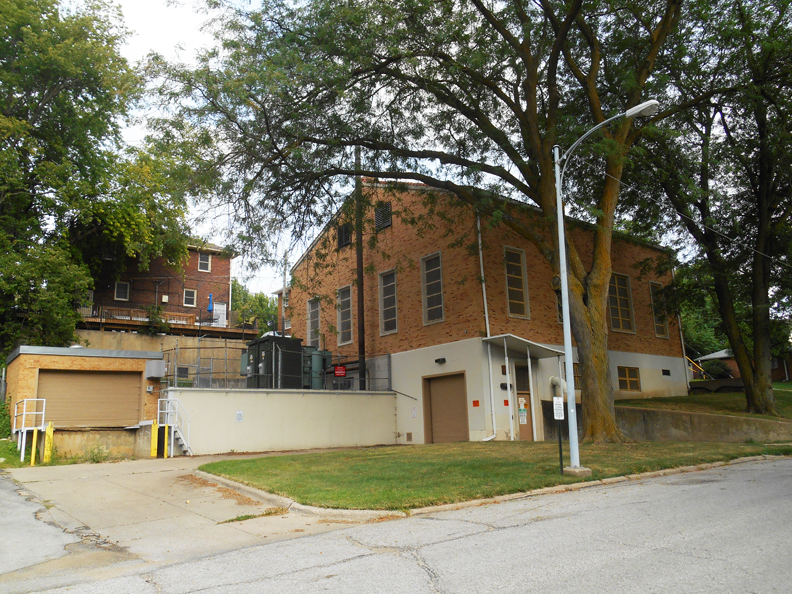
3308 Pacific in 1954, from the northwest angle. Workmen of the Metropolitan Utilities District installing pumps at Turner Boulevard and Pacific Streets. Creator: Savage, John (1903-1989). Publisher: The Durham Museum. Date: 1954. The lower photo is how it looked last summer, 2019.
The Undisclosed
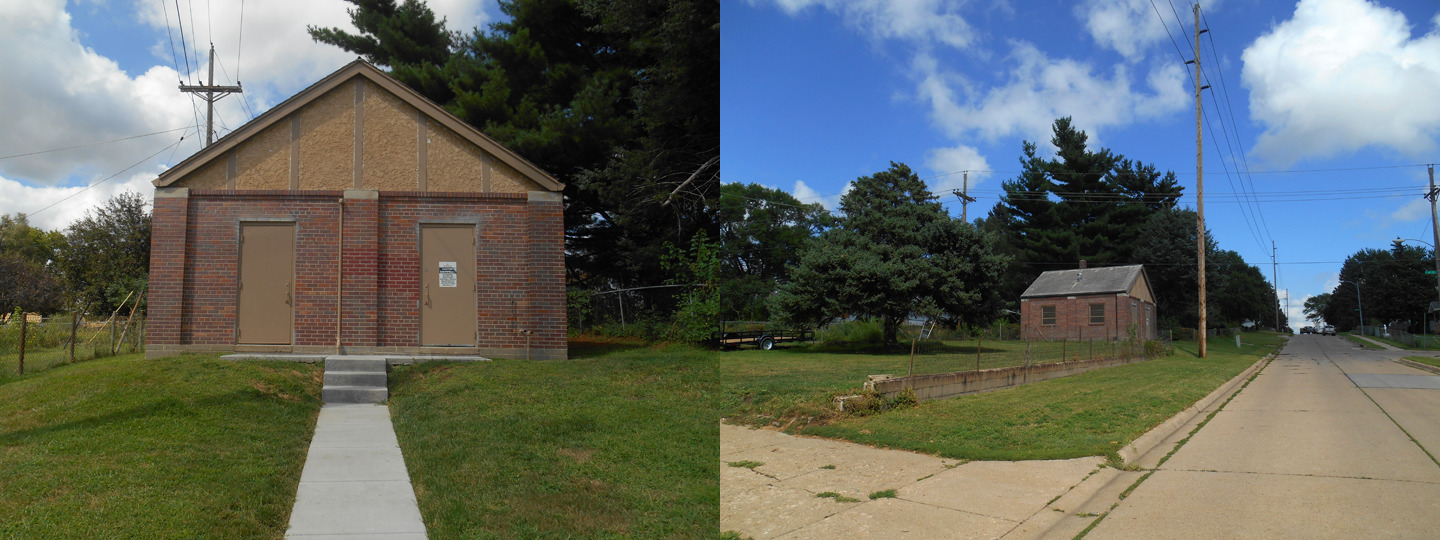
3710 Madison. In 1951the MUD “Governor Station” at 3710 Madison was proclaimed to control new high-pressure natural gas mains. In addition to 2211 South 60th and 1321 South 30th Avenue, built at the same time, this trio, along with other governor stations, were tasked with handling an 85% increase in gas use.
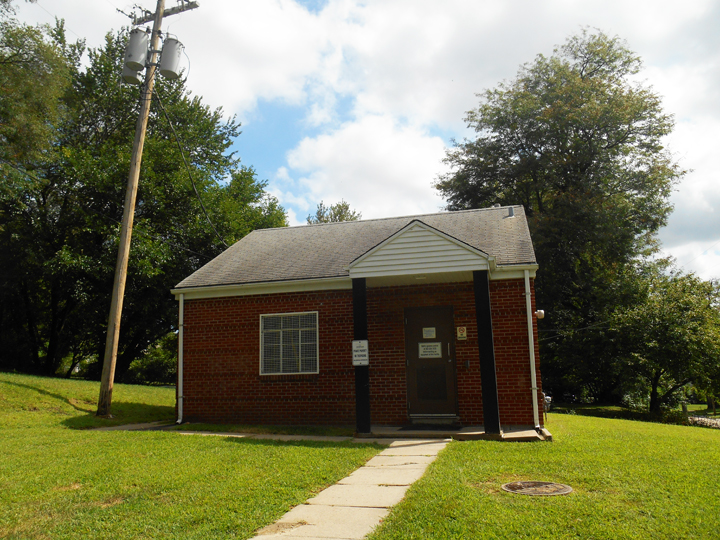
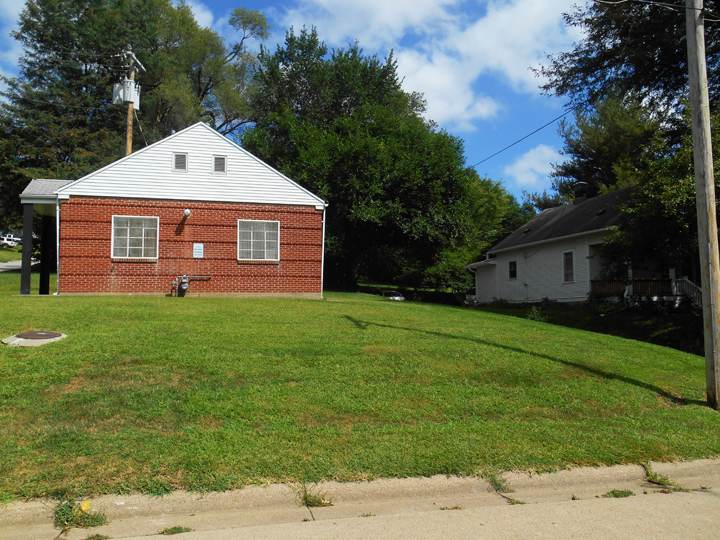
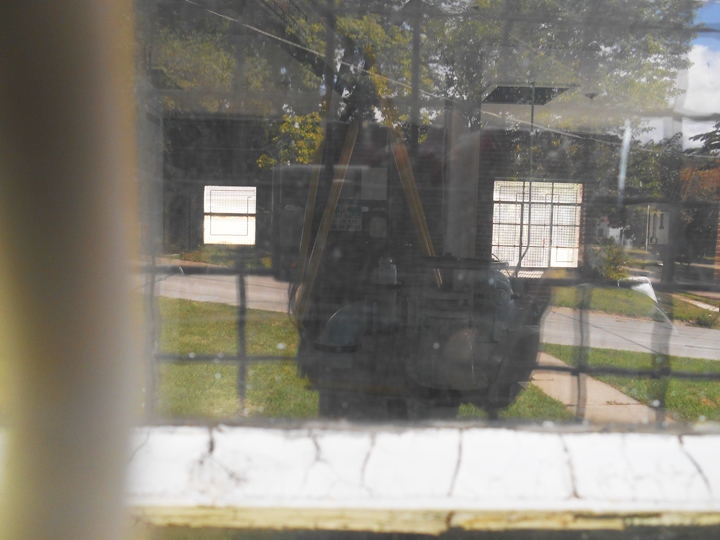
3643 Hartman Avenue. The World-Herald announced in July of 1954, MUD completed another improvement to the water system by building a “new booster station at 37th Street and Hartman Avenue. This station is designed to improve water pressure conditions in the higher section of the city north of Ames Avenue and west of 36th Street.” Whoa…pedimented entryway. Simple but still. They didn’t have to add these elaborations. This is one of my favorite ones for style, placement in the neighborhood and positioning on the lot.
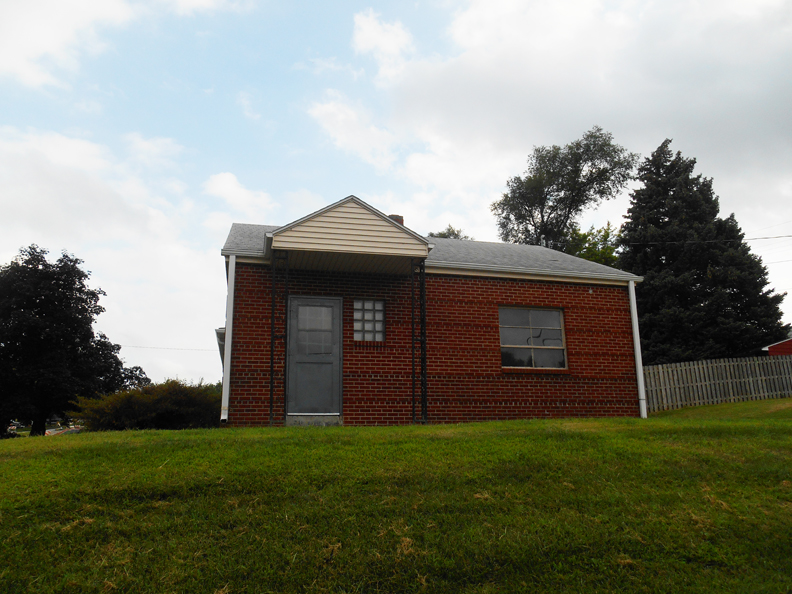
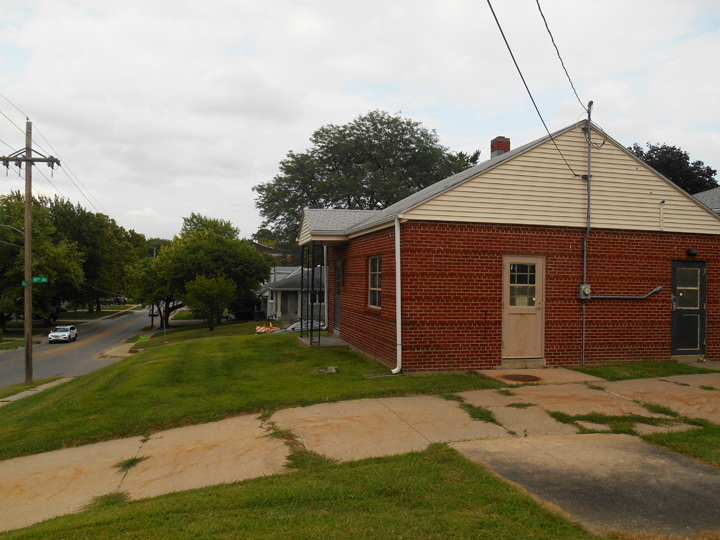
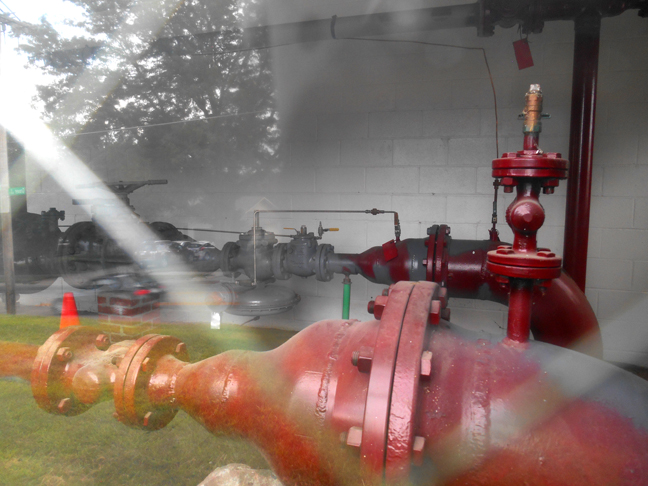
4951 Grover Street. MUD asked the city permission in 1954 to erect a booster station on the southwest corner of 49th Avenue and Grover Streets. 4951 Grover is of a similar style to 3643 Hartman and I would put money on them having been built by the same company. I adore that they took the time to create the front porch detail and ironwork.
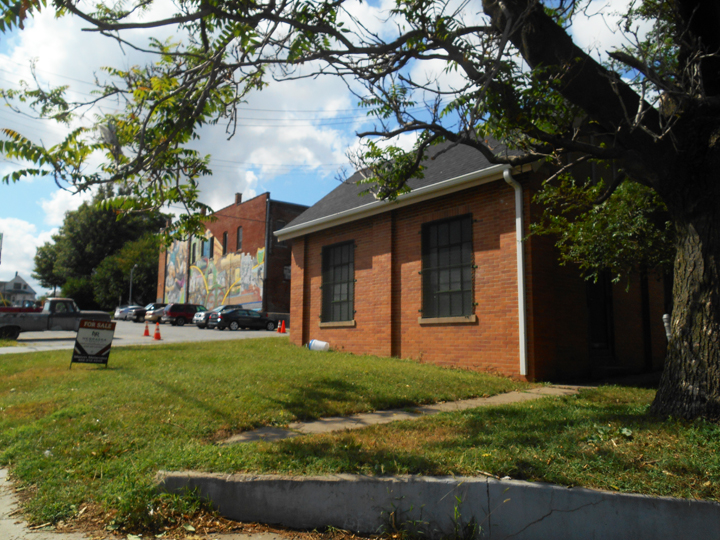
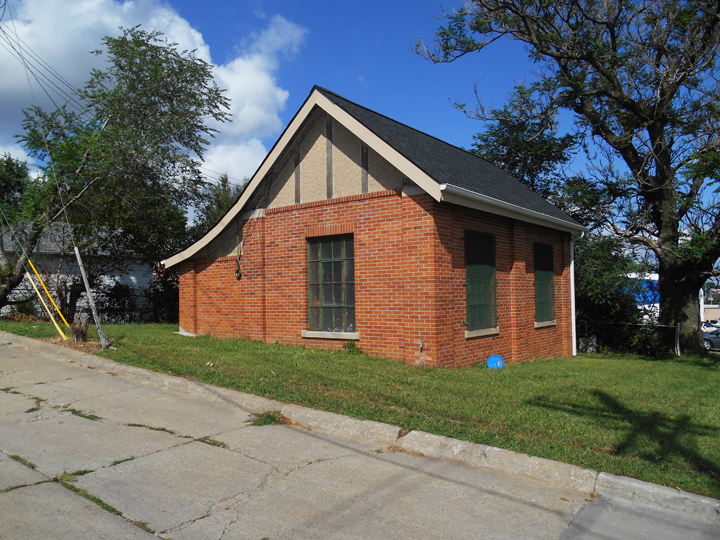
3214 L Street is currently For Sale. The Assessor’s site registers it having been built in 1920. An adorable disguise and a primo location, this property has been for sale off and on. I would guess that many buyers were unaware of the difficulty they would have in deconstructing an energy site. More on this phenomenon later. This is a real Tudor cutie and reminds me of my play schoolhouse favorite up in Benson.
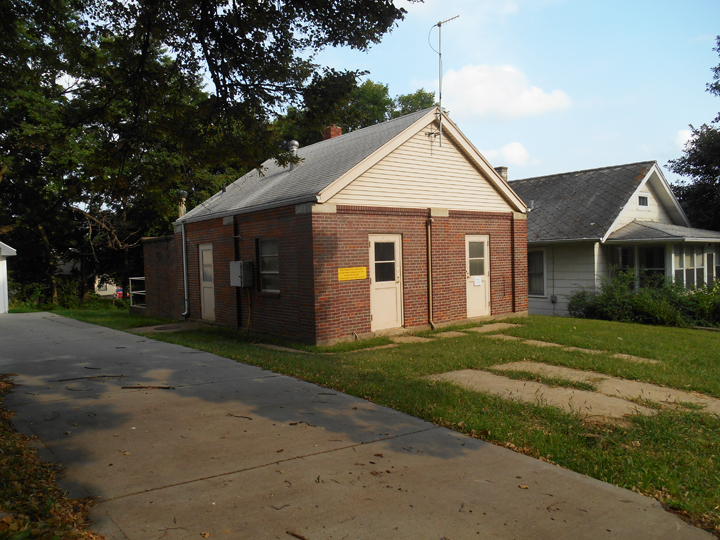

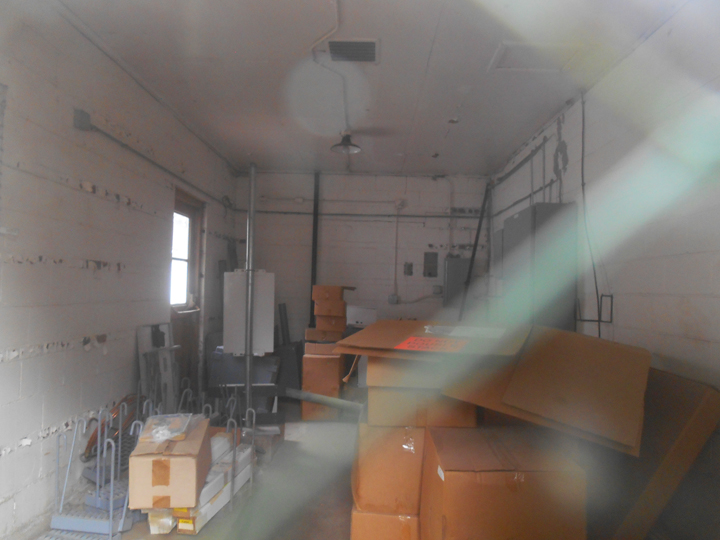
2211 South 60th Street is one of those truly hidden-in-plain-sight homes that we all see but have stopped noticing. What’s in all those boxes? Hard to imagine this is an ideal storage place for huge company such as MUD.
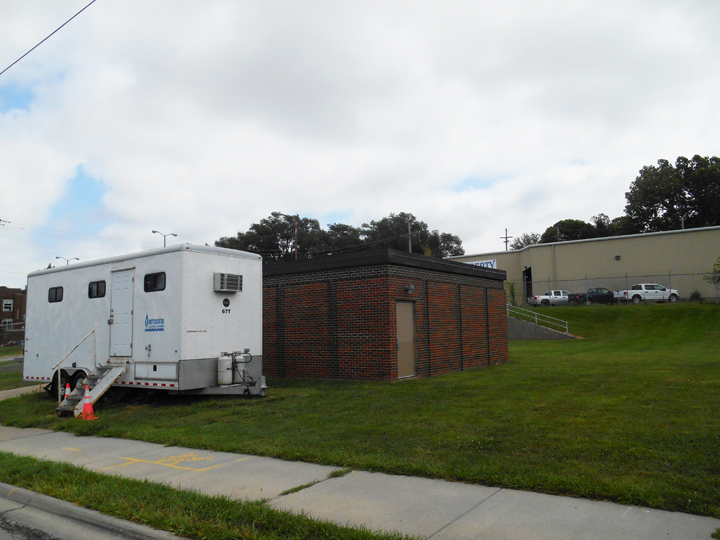
1917 Center Street. Now this little gal is as Vague as Vague gets and I love it! MUD owns this lonely building on a lonely street and for that reason, we cannot be sure that gnomes do not live inside. For that matter, we’ve really got to question if that white MUD trailer is really a trailer. It could very well be a portal to Minkowski space.
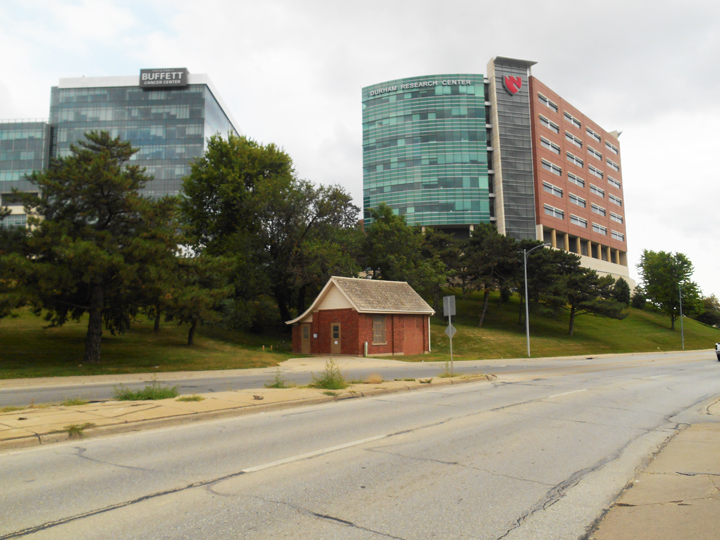
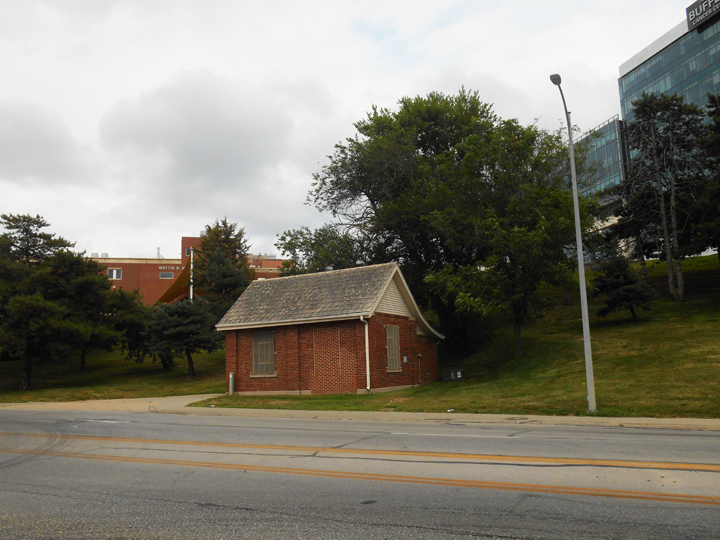
409 South Saddle Creek Road. A Real Life Faker and one of my all time favorite sites in Omaha. I actually feel quite bad for this little Tudor. Her whole neighborhood has disappeared around her, swallowed up by UNMC. The cover is blown and she seems awfully exposed but wait…no one even notices her while vacuuming his or her cars at Russell Speeders Car Wash!
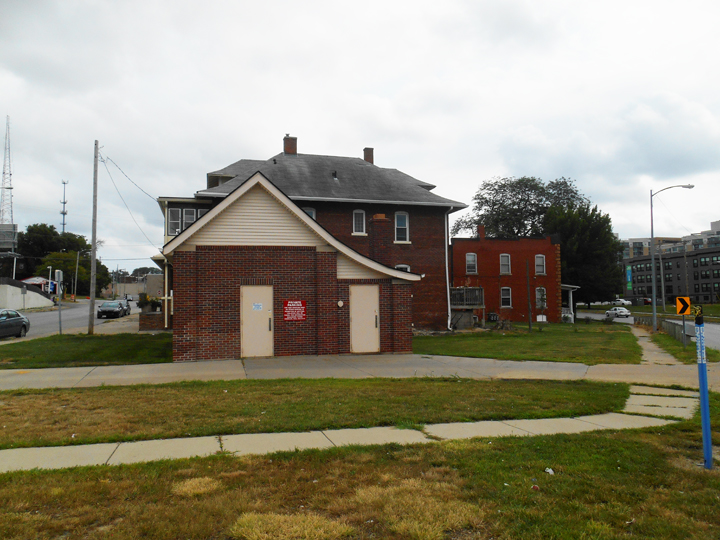
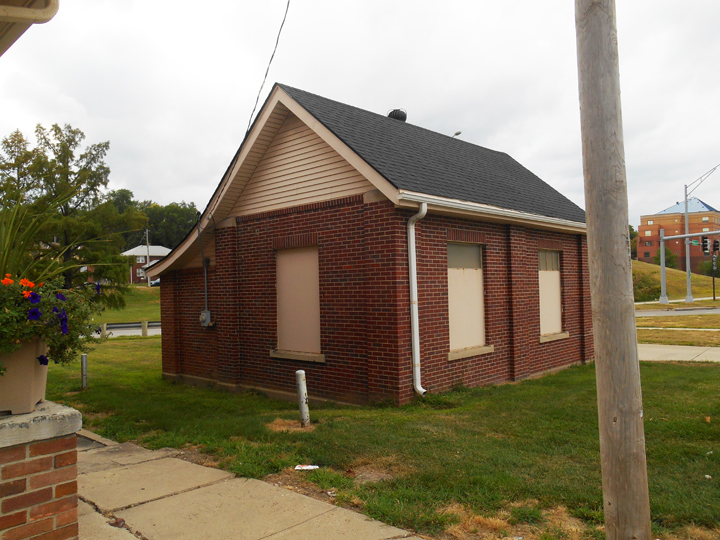
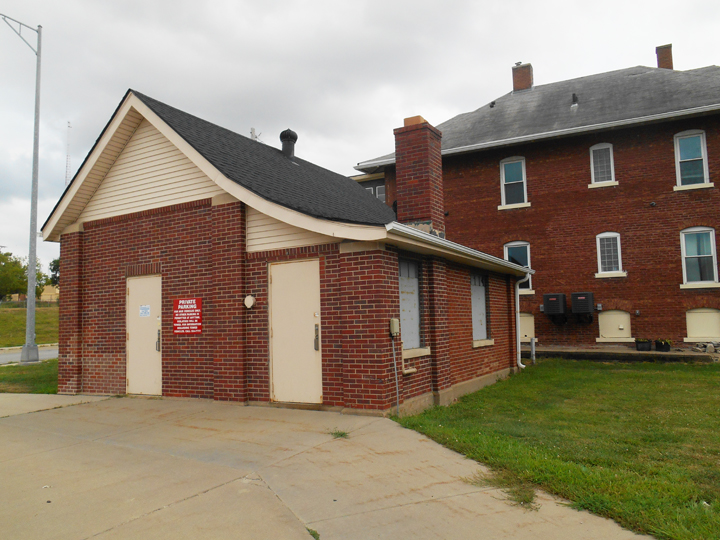
126 North 30th Street feels like the twin of the Saddle Creek gal. You might remember that I am coo-coo for triangle lots as well as properties near streets that curiously create triangles. My 126 North 30th Street fixations sits wedged on the strange triangle of one-way north-running 30th Street and one-way south-running Lincoln Boulevard, which then oddly becomes Turner Boulevard. I think she’s quite attractive and cool with her sloping roofline and chimney. Wait… a chimney? Great Detail. She is one of the larger hidden houses. This was once a fully loaded neighborhood and her positioning wasn’t always this precarious.
Secrets of the Humming Houses
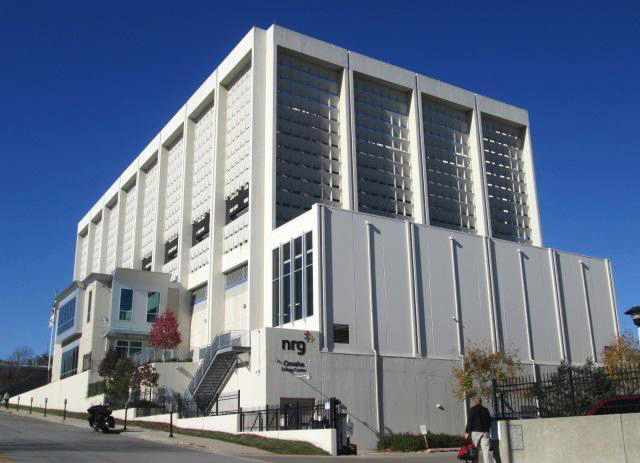
The NRG Energy Center building at 2152 Howard Street is the ultimate shell. I’ve written about this elusive Madame before in my Howard Street investigation. NRG Energy Center of Omaha provides energy-efficient district heating and cooling in the business district of downtown Omaha, including Creighton University. It just looks like a large federal building, parking garage or corporation; this is literally A Wrap for large machines. An aerial view will reveal all.
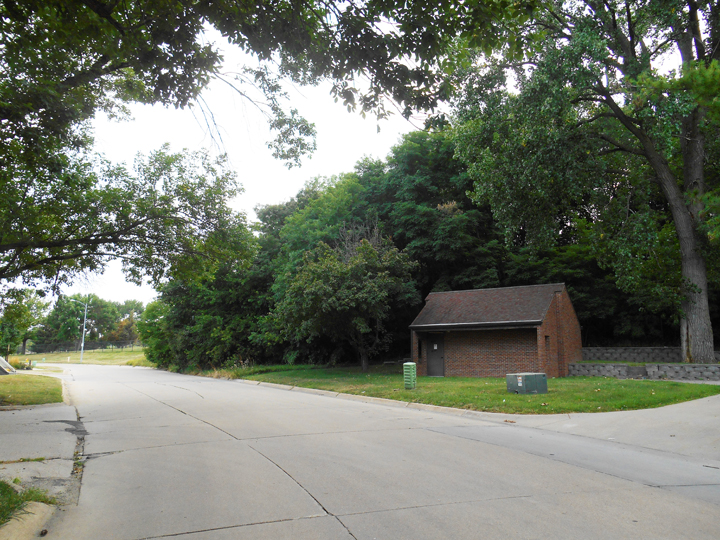
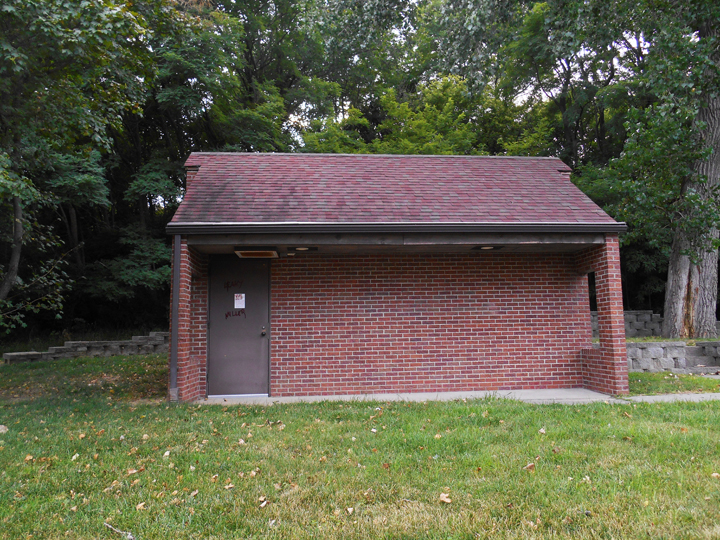
2020 South 73rd Street. The Northwestern Bell house cozily snugged behind the Crystal Jade Restaurant. You may not know of this one unless you frequent the winding backroads to The Drover Restaurant and Lounge. And you really should frequent The Drover. Perhaps because of its positioning, this little building kind of resembles a campsite or State Park bathroom. I would hope it doesn’t also serve that purpose. The telephone “houses” are also some of the most mysterious in my book. What is in there? Equipment and wires, I would have guessed decades ago but now that technology has decreased the need for physical space, I’ve got to logically assume elves make boots in here. Northwestern Bell had built about ten of them. Maybe more.
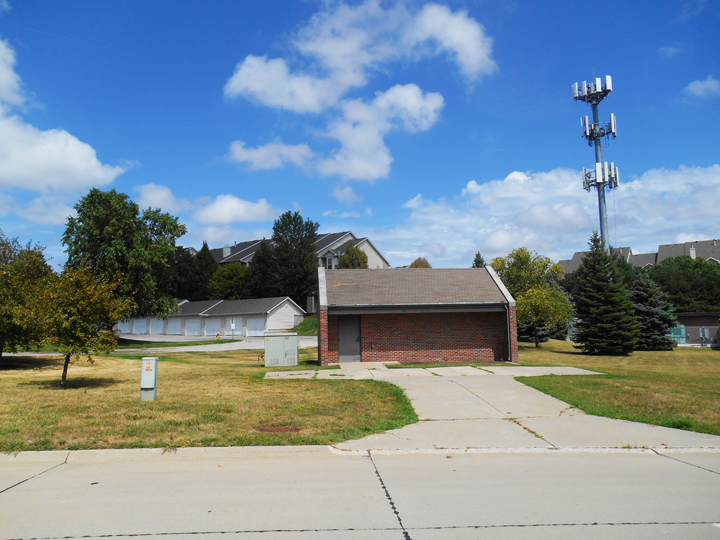
14020 West Maple Road is also a telephone building, owned by Quest. 14020 is the twinsie of the 73rd Street Elf House. This strangely configured lot also houses a much larger structure, like a clubhouse of sorts. But it isn’t a clubhouse; it is another MUD Pumping Substation. What follows are those substation photos.
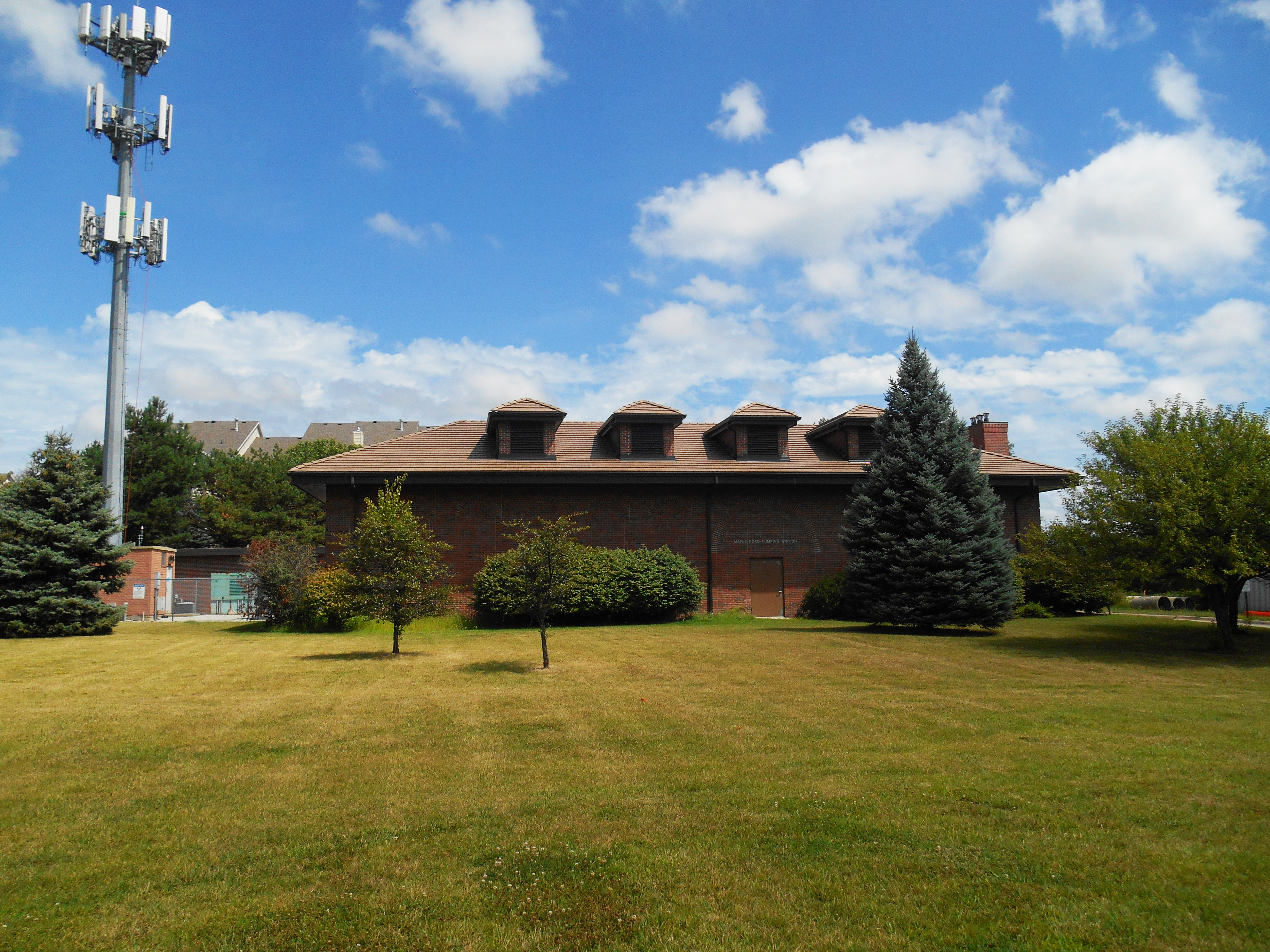
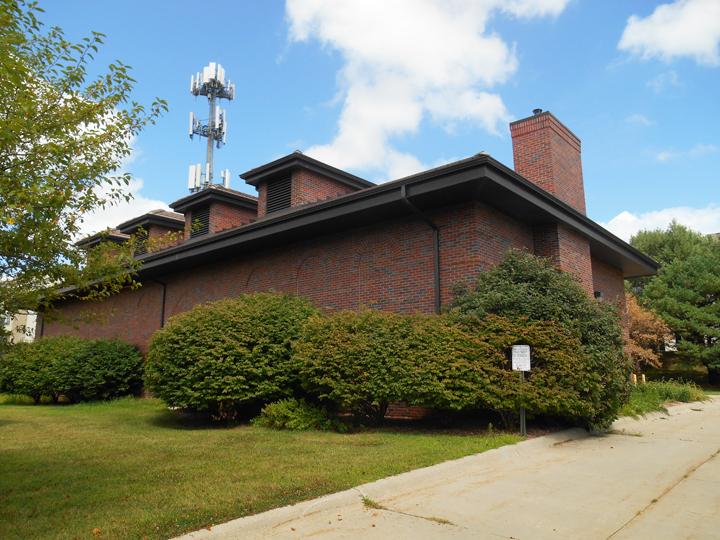

Dormer windows even! These buildings are definitely the most contemporary of the bunch.
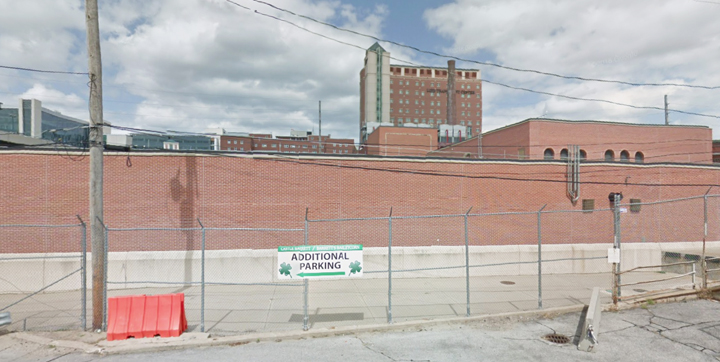
4325 Jones Street is enshrouded in mystery. Windowless, it is discovered plopped south of UNMC and directly north of Barrett’s Barleycorn Pub & Grill. https://myomahaobsession.com/2017/11/19/4322-leavenworth-look-back/ This long brick building is owned by Omaha Public Power District. If you are like me, you might have thought this large building was just another of UNMC’s structures and never questioned it.
The Field Club Mystery
In my tracking of utilities buildings, 1320 South 36th Street appeared to be on the Field Club Golf Course according to Google Map. But that didn’t make any sense. I had already been on wild goose chases out at the Boystown plant, a Ralston plant, Millard and hilly Rainwood Road up north and some didn’t pan out or I couldn’t access them. I obsessively drove around and around the Field Club course but didn’t want to trespass on that day. Where was it and how could I find the little building situated on the golf course?
Was I the only one who didn’t know of the Field Club Reservoir? I feel quite silly now, to think of my neurotic circling. In July of 1952, the Omaha Field Club granted permission for the Metropolitan Utilities District to construct a reservoir on their grounds. The Field Club’s 18-hole course was situated on land leased from Douglas County. MUD purchased the land from the county for $35,000, with the agreement that the Field Club could have use of the above ground land and maintain it as part of their course. MUD would operate the 2.5 acres underground. Is this weird or what? Right up my alley.
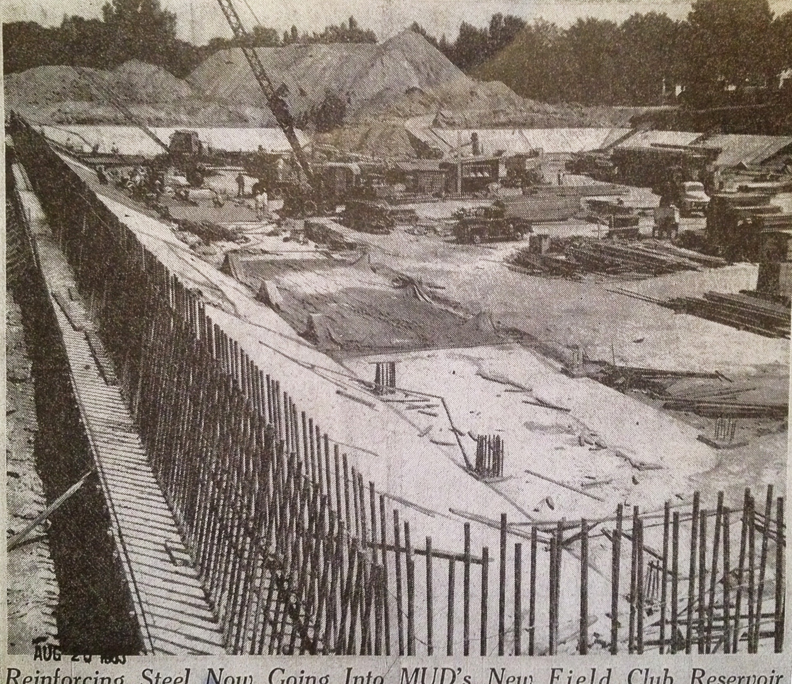
August 1953 photo from the clippings file of the W. Dale Clark Library Reference Desk. Construction started in May of 1953. The Burns and McDonnell engineering firm consulted on the project.
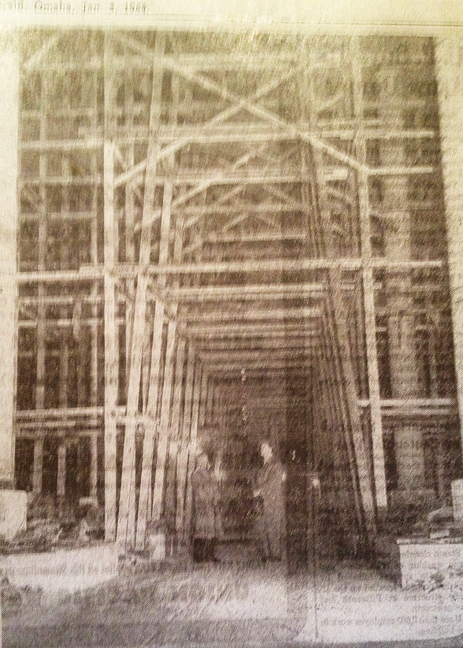
January 1954 photo from the clippings file of the W. Dale Clark Library Reference Desk. Like Scaffolding Ghosts of the past. “The reservoir, opened in 1954, holds water from both the Platte and Missouri Rivers. It is located under ground, directly beneath the 10th tee on the Field club Golf course. 25 million gallon reservoir covering 2.5 acres. However back in the 1950s, I found writings stating it was the No. 1 tee and fairway that was initially affected.
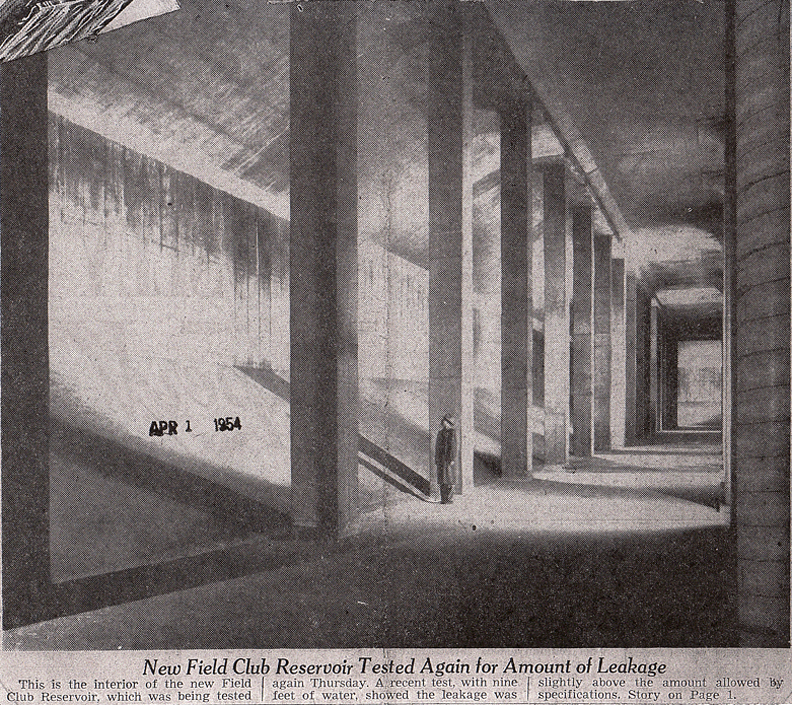
April 1954 photo from the clippings file of the W. Dale Clark Library Reference Desk. Isn’t this interior image of the Field Club Reservoir haunting and wonderful? I pretend that is a film noir detective surveying the situation. The reservoir was completed in the summer of 1954. I would love to go tiptoe down there and Listen. Can you imagine? Do I need to point out the extra shadowy fact that it holds an underground address of 1320 South 36th Street?
Substation Health Risks?
It is clear the City of Omaha and the utilities companies cared greatly to design beautiful, little structures around the city’s unattractive infrastructure. Most likely not of concern to Old Omaha, some wonder in recent decades if these neighborhood substations pose public health risks. The lightening bolt found on some of the doors hint at that risk, but most likely warn of the possibility of electrocution if someone were to break in. I know it kept us kiddies away even if I wanted to get in there and wallpaper.
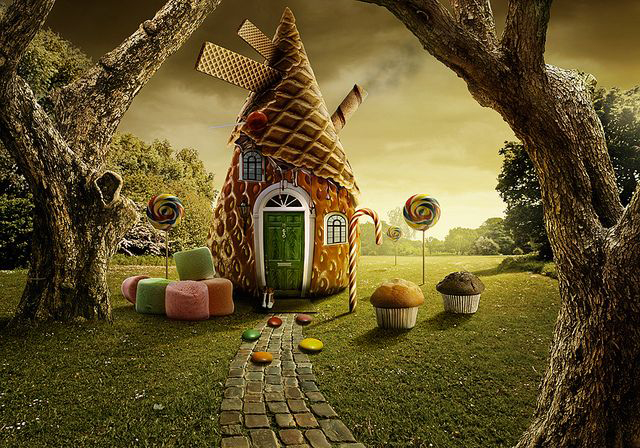
EMF stands for electric and magnetic fields, also called electromagnetic fields, radiation or dirty electricity. EMF websites warn of the dangers of living near electrical power sources—the issue being radiation frequency. According to the National Institute of Environmental Health Sciences site, EMFs are invisible areas of energy associated with the use of electrical power and various forms of natural and man-made lighting. “EMFs are typically grouped into one of two categories by their frequency:
Non-ionizing: low-level radiation, which is generally perceived as harmless to humans.
Ionizing: high-level radiation which has the potential for cellular and DNA damage.”
EMF research from the 1990s focused on extremely “low frequency exposures” stemming from conventional power sources, such as power lines, electrical substations, or home appliances. No one argues that the little houses do emit “a low-frequency electromagnetic radiation (EMR), which creates an electromagnetic field (EMF). This EMF has two components, an electric field and a magnetic field.” It is generally believed that the electric field does not penetrate the transformer and substation walls; however there is concern that the magnetic field generated does bore through brick, concrete and the human body. This magnetic field is thought to be responsible for the health risks of low-frequency EMF but studies differ on the damage caused/ consequences of this frequency.

Subsequent to the development of cell telephones, wireless routers, and the Internet, all drawing from EMF, the science community has their hands full since the 90s transformer house research. The World Health Organization stated, “EMF exposure now occurs to varying degrees to all populations of the world, and the levels will continue to increase with advancing technology. Thus, even a small health consequence from EMF exposure could have a major public health impact.” If you have looked into Electromagnetic Hypersensitivity or know someone who struggles with this disorder, dirty electricity-electrical pollution is of prominent concern. There is public apprehension over possible connections between EMF and adverse health effects. Most sites recommended a professional EMF survey be completed by an independent EMF assessor (not by the utility company concerned) for complete assessment of potential health risks if you want to buy a property near an electric house.
For myself, it was never a waste of time to imagine a life within the little decoy homes. All I saw was a gingerbread roof and a gumdrop doorbell. Curiouser and Curiouser, the small Tudors remain a vestige to another chapter not so long ago when the city and utilities’ companies took steps to create quality, hidden houses. Their magnetic charms continue to draw me in.
This investigation now has a Part Two. Please check out The Invisible House Part Two.
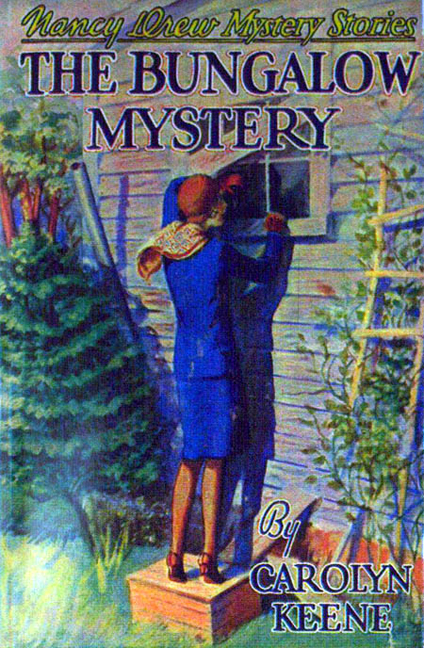
This is only a small part of the story. I welcome your feedback and comments on the little houses, the Big Pretties and secret structures. I have featured only a few. Help us find more! Please feel free to leave a thought in Comments. I welcome you to poke around with your flashlight. Investigate. Hide in the shrubbery. Look under these rocks and down those alleyways. I am more than pleased to have you tiptoe about. By the time you head for home, I hope you have been fully Sherlocked and Satiated. Thank you, detective friends. Miss Cassette
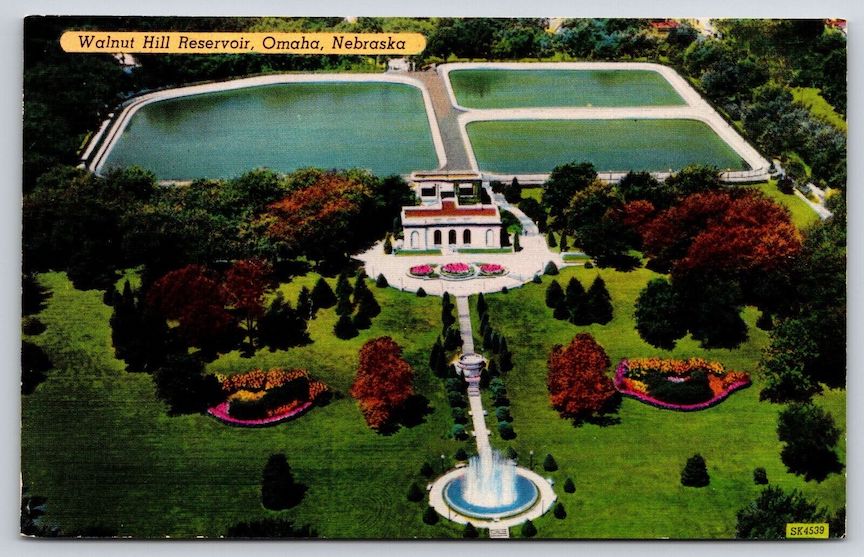
If you like what you see, you can keep up with my latest investigations by joining my email group. Click on “Contact” then look for “Sign me up for the Newsletter!” Enter your email address. It will then display “Thank you, your sign-up request was successful!” Make sure to check your email address to confirm. You will get sent email updates every time I have written a new article. Also feel free to join My Omaha Obsession on Facebook.
© Miss Cassette and myomahaobsession, 2019. Unauthorized use and/or duplication of this material without express and written permission from this site’s author and/or owner is strictly prohibited. Excerpts and links may be used, provided that full and clear credit is given to Miss Cassette and myomahaobsession with appropriate and specific direction to the original content.
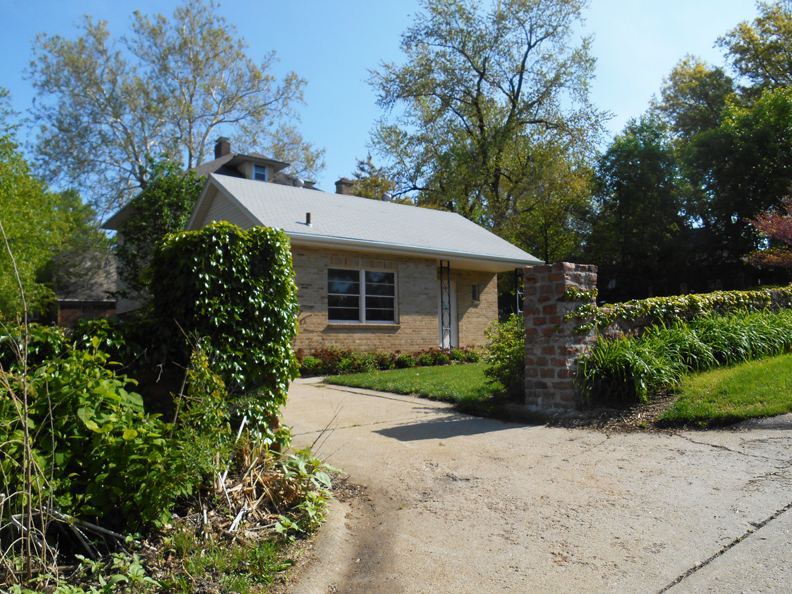
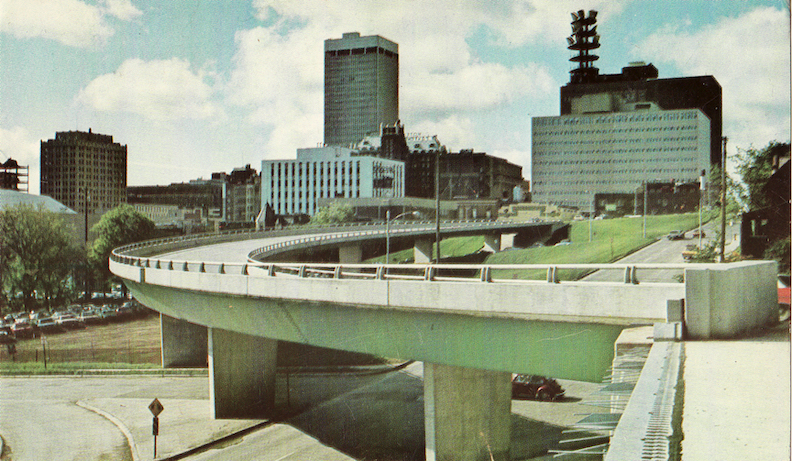

Hello,
I enjoyed your article on the powerhouses of Omaha. I grew up across the street on the SW corner of 56th & Lake. I always had a fascination with the 2504 N. 56th St. station. Men would stop by occasionally but not for long. Living across the street from 1960 to 1980s until my mom finally sold the house. Playing around the neighborhood as we so often did, I would sometimes investigate the property. Imagining that this was my little house, a nice front porch, peering through the windows to keep up to date it’s contents. The side door along the driveway used to have a window but I see it is now a solid steel door. I’m not sure who manicured the lawns but I’m just guessing it was Merrill Workhoven who lived in the big house, whom you rarely saw unless coming and going to work. Merrill was in Omaha radio broadcasting…”My time is up, thank you for yours.” You see when he lived there the house was a dark brown color, very hauntingly eerie. He drove an old green Buick, sometimes he’d park in front of the house and sometimes he’d park in back, access through the driveway of the little powerhouse. There was an old brown barn back there too. I’m sure lots of bats lived in that barn, just sayin’ No one ever told us to stay away from there. My dad would pull into that driveway and back his car across the street into the back of our house so he could then pull the car into the garage. Sometimes my brother and his friends would use the empty lot beside the little house. I see someone takes care of the property with plants and such. Weeds and vines have overtaken the great wall surrounding all the property. We used to sit on that wall or walk on it. Lots of fun memories of our gorgeous neighborhood. I loved that little place and it’s my favorite one. Thanks for the great pictures.
What a great comment! Thank you for this. I found the Workhoven name. The Mrs. must have lived there after Merrill died? So interesting. I love your details!
No, Mrs. Workhoven died before Merrill so I think the house was sold by their daughter. Thanks for the nice comments.
I actually just sold 2510 N 56st st in October of 2018. I lived there with my (now ex) husband and 3 children for about 16 years. When we bought it, it was considered the “haunted house” on the block, lol. It was dark and brown and the porch was enclosed with a dilapidated screen enclosure (which I kicked down the 2nd day!). I was the one who changed the color to the creamy yellow it wears today. My ex was a former landscape designer, so we arranged with MUD to lease the property around the blonde brick substation and planted the entire property with flowering perennials and trees. The vines on the brick walls are ivy, so we left them and kept the bindweed at bay. We heard many stories about Merle Workhoven from passers-by as we worked in the yard and on the house, so when his daughter contacted us several years ago to ask to fly in from Chicago to see the house, we were thrilled to welcome her. She brought several pictures of the home during her time growing up (we left them with the new owners). WE LOVED the house and the neighborhood; it was a magical place to raise our children! (By the way… I believe the Buick was a gift from Johnny Carson, whom he got started in the radio business). I have been by a few times since I moved out and know that the landscaping was a full-time job to maintain, so I am not surprised to see it overgrown now. Man, that home was special- especially the porch!
Ooooo this is so interesting to hear. I just love the home and what you did with it. It is so gracious now and you really brought it back to life. Thank you for sharing these clues, Lynn.
Happy Holidays Ms. Cassette!
This interesting focus today reminded me of yet another ‘utility house’ that happens to be on the corner of the lot where one of my favorite haunts resides..the “White House” bar on 7768 Cass St. On the SE corner off their front parking lot is a tiny cinder-block structure, no doubt somehow utility-connected. I’ve seen it all my life, and I know it must date back to at least the late 1940s when the Keystone neighborhood was first being constructed. It has an interesting vent pipe on its roof with a point on it too. I’m thinking it’s possibly a natural gas distribution facility of some sort? It used to have glass windows, but those have been replaced with metal panel in the original frames. Almost looks like an oversized outhouse! An aerial photo taken by John Savage of OWH photography fame shows this little “shack” existed at least by May, 1955, and I’m thinking much earlier when the farm fields to the north were giving way to housing developments.
Hello Mr. Fox, I will investigate! Thanks for the tip.
Love this post! (As all your others!) I grew up at 51st and Erskine, mid-1950s-early 1970s. Always wondered about and was fascinated by the little house at 5143 Erskine. My life-long love of cottages began with this enchanting little house. Speaking of Erskine Street; the winter season will always and forever bring to mind what a fantastic sledding hill Erskine Street was for the kids of 51st Street! It was great when our dads would load us up and take us and bulky toboggans over to Memorial Park, but man…for sheer speed and excitement, nothing matched throwing your Flexible Flyer sled onto the packed snow and ice of Erskine, belly-flopping onto the sled and barreling towards 52nd Street! Near the bottom of the hill, we’d start dragging the toes of our red rubber boots. Those boots were our brakes, slightly slowing our pell-mell advance toward what my mother warned us was certain death…all that traffic on 52nd Street! When our mittens were covered with clots of frozen ice/snow, we’d drag our sleds behind us up the hill, but this time to go inside to thaw out our mittens, clothes-pinned to the metal furnace grates that protruded from the baseboards in the dining room and living room. Our mittens would drip water onto the hardwood floors while we warmed our hands around mugs of hot chocolate. The mittens never completely dried out on these sledding intermissions, but our snow pants, draped over the backs of chairs positioned in front of the grates, usually dried sufficiently to allow them to be pulled on for a few more thrilling runs down the Erskine Street hill. Great streets to grow up on, and a great time in which to grow up, period. Keep your wonderful posts coming, Ms. Cassette!
This is so great, Marilyn! Thank you. Great descriptions. You know you’re a Benson kid if you have heard of Erskine and our other oddly names streets. Some people I’ve met have still never heard of this street!
I am the son of John Ausenhus, whom you quote in the description of 5143 Erskine. My parents moved in a block away on 53rd. Street in 1965 and remain there today, perhaps the longest-residing residents of the Country Club district. It’s interesting to find out that he ran in “inner circles.” I feel a bit special by association. I can confirm the general accuracy of your report, although the family never lived there. He had hopes of rehabilitating it into a duplex. Alas, it was mostly used for storage until he sold it. If there is a bomb shelter there he did not divulge it to me. Love the excellent reports of my hometown. Cheers
Thank you so very much for clearing this up. The past owners wondered if he lived there, ultimately. I dreamed it was a workshop. For my part, I did not mean to imply that your father was operating from within an inner circle as much as having access to those who would want a bomb shelter built. He said in a report that he would not divulge their names or addresses and I wholly respect that. Thanks for writing in–you have made this a richer story.
Miss Cassette – You have me in a state waiting for every report! I live in Field Club & would like to visit with you further about our treasure there! But, several years ago MUD auctioned or sold 2 of these little gems. One was on about 45th & Center on the North side. I cant recall where the other was located. The people who came to own the Center St property added a second floor.